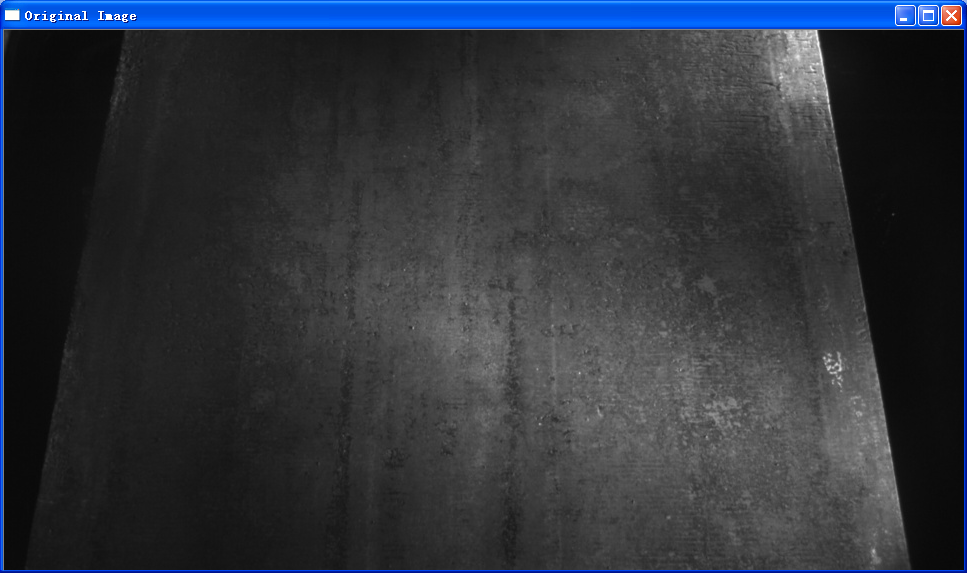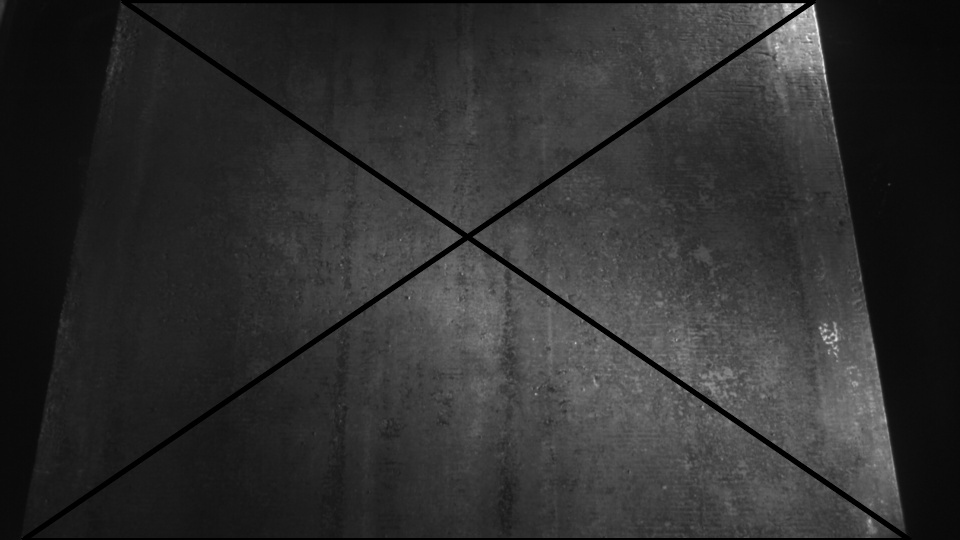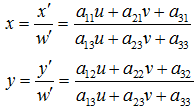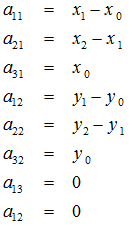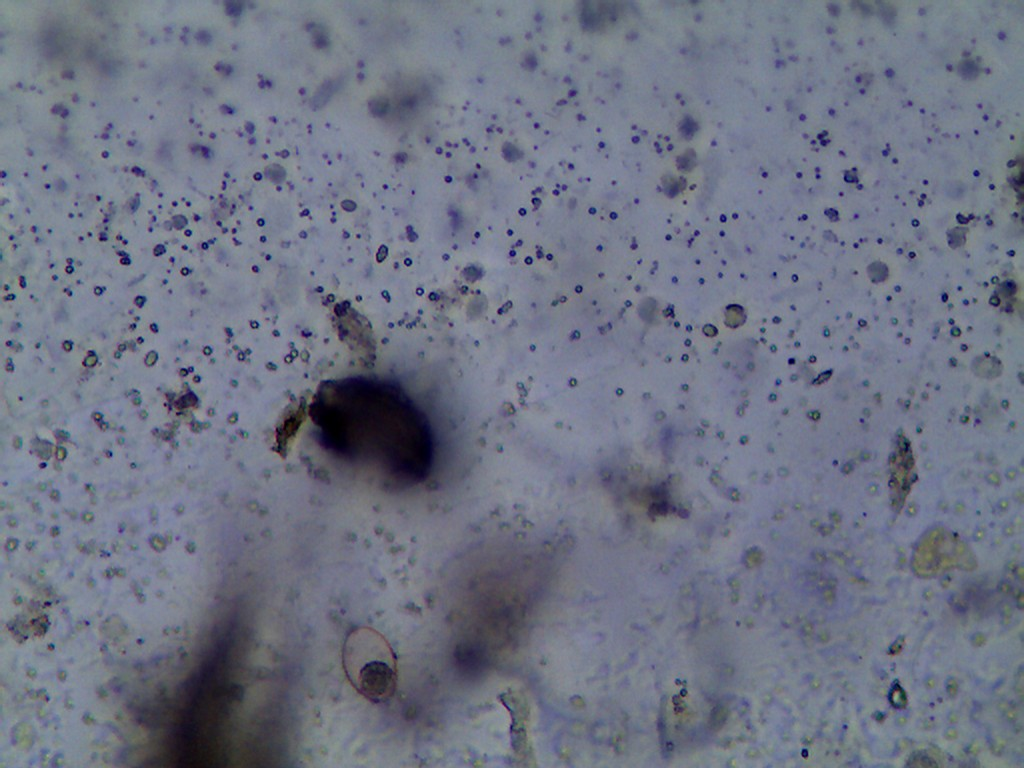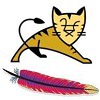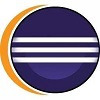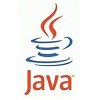opencv透视变换
u,v是原始图片左边,对应得到变换后的图片坐标x,y,其中
变换矩阵



重写之前的变换公式可以得到:
所以,已知变换对应的几个点就可以求取变换公式。反之,特定的变换公式也能新的变换后的图片。简单的看一个正方形到四边形的变换:
变换的4组对应点可以表示成:
根据变换公式得到:
定义几个辅助变量:


求解出的变换矩阵就可以将一个正方形变换到四边形。反之,四边形变换到正方形也是一样的。于是,我们通过两次变换:四边形变换到正方形+正方形变换到四边形就可以将任意一个四边形变换到另一个四边形。

# include "opencv2/imgproc.hpp"
# include <iostream >
# include <stdio.h >
using namespace cv;
using namespace std;
/** @function main */
int main( int argc, char * * argv )
{
cv : :Mat src = cv : :imread( "test.jpg", 0);
if ( !src.data)
return 0;
vector <Point > not_a_rect_shape;
not_a_rect_shape.push_back(Point( 122, 0));
not_a_rect_shape.push_back(Point( 814, 0));
not_a_rect_shape.push_back(Point( 22, 540));
not_a_rect_shape.push_back(Point( 910, 540));
// For debugging purposes, draw green lines connecting those points
// and save it on disk
const Point * point = ¬_a_rect_shape[ 0];
int n = ( int )not_a_rect_shape.size();
Mat draw = src.clone();
polylines(draw, &point, &n, 1, true, Scalar( 0, 255, 0), 3, CV_AA);
imwrite( "draw.jpg", draw);
// topLeft, topRight, bottomRight, bottomLeft
cv : :Point2f src_vertices[ 4];
src_vertices[ 0] = not_a_rect_shape[ 0];
src_vertices[ 1] = not_a_rect_shape[ 1];
src_vertices[ 2] = not_a_rect_shape[ 2];
src_vertices[ 3] = not_a_rect_shape[ 3];
Point2f dst_vertices[ 4];
dst_vertices[ 0] = Point( 0, 0);
dst_vertices[ 1] = Point( 960, 0);
dst_vertices[ 2] = Point( 0, 540);
dst_vertices[ 3] = Point( 960, 540);
Mat warpMatrix = getPerspectiveTransform(src_vertices, dst_vertices);
cv : :Mat rotated;
warpPerspective(src, rotated, warpMatrix, rotated.size(), INTER_LINEAR, BORDER_CONSTANT);
// Display the image
cv : :namedWindow( "Original Image");
cv : :imshow( "Original Image",src);
cv : :namedWindow( "warp perspective");
cv : :imshow( "warp perspective",rotated);
imwrite( "result.jpg",src);
cv : :waitKey();
return 0;
}
if ( !src.data)
return 0;
not_a_rect_shape.push_back(Point( 122, 0));
not_a_rect_shape.push_back(Point( 814, 0));
not_a_rect_shape.push_back(Point( 22, 540));
not_a_rect_shape.push_back(Point( 910, 540));
int n = ( int )not_a_rect_shape.size();
Mat draw = src.clone();
polylines(draw, &point, &n, 1, true, Scalar( 0, 255, 0), 3, CV_AA);
imwrite( "draw.jpg", draw);
src_vertices[ 0] = not_a_rect_shape[ 0];
src_vertices[ 1] = not_a_rect_shape[ 1];
src_vertices[ 2] = not_a_rect_shape[ 2];
src_vertices[ 3] = not_a_rect_shape[ 3];
Point2f dst_vertices[ 4];
dst_vertices[ 0] = Point( 0, 0);
dst_vertices[ 1] = Point( 960, 0);
dst_vertices[ 2] = Point( 0, 540);
dst_vertices[ 3] = Point( 960, 540);
Mat warpMatrix = getPerspectiveTransform(src_vertices, dst_vertices);
warpPerspective(src, rotated, warpMatrix, rotated.size(), INTER_LINEAR, BORDER_CONSTANT);
cv : :namedWindow( "Original Image");
cv : :imshow( "Original Image",src);
cv : :namedWindow( "warp perspective");
cv : :imshow( "warp perspective",rotated);
imwrite( "result.jpg",src);
